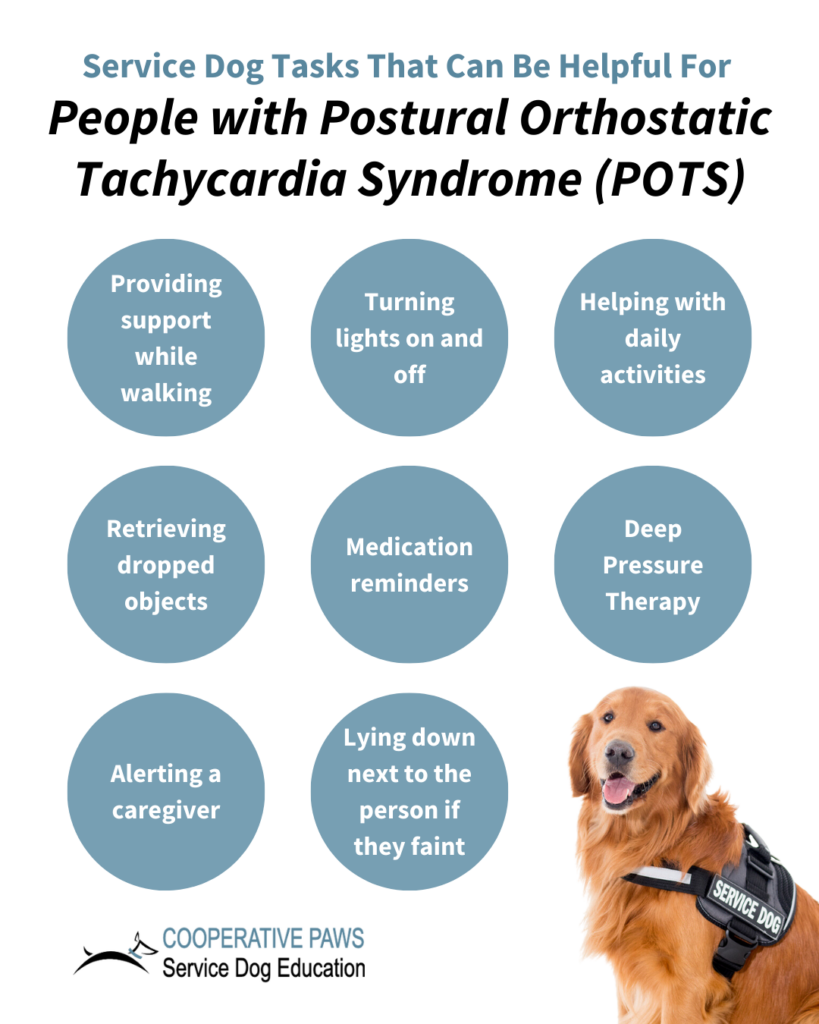Postural orthostatic tachycardia syndrome, or POTS, is a condition that affects the way the body regulates blood flow. It can cause a variety of symptoms including lightheadedness and fainting. POTS has been increasing, and according to Dysautonomia International it now affects about 6 million Americans. The demand for service dogs to help people with POTS has increased significantly in recent years.
Mobility tasks and tasks to mitigate fatigue can be helpful for people with POTS. These include providing support or balance assistance while walking, retrieving dropped objects, turning lights on and off and helping with daily activities like getting dressed. Additionally, medication reminders can be helpful for people with POTS who are struggling with brain fog. Tasks like DPT (deep pressure therapy), alerting a caregiver that help is needed, and lying down next to the person when they faint may be helpful as well.
Some service dog organizations and individuals have trained service dogs to help people with POTS by alerting when the individual’s heart rate changes before they faint. Programs are typically doing this as a scent-based alert, using scent samples collected when the person had a change in their heart rate. There is no scientific research regarding dogs’ ability to alert to heart rate changes, and the consequences should the dog fail to perform as intended could be unsafe for the handler. For example, if the dog fails to alert, the person could be injured by the fall when they faint. Trainers may want to train these alert tasks as back-ups to other medical strategies and tools like smart watches that can notify the wearer about heart rate changes. Selecting tasks in communication with a client’s healthcare provider is helpful to ensure tasks that are selected are appropriate for the individual’s needs.
Trainers working with owner-trainers who have POTS need to be prepared to offer accommodations to help the client be successful when working with their dog. Some simple strategies that may be needed include scheduling training sessions at times when the owner is less fatigued, helping the client train the dog from a seated position or even lying down, and incorporating breaks in the training session. Additionally, since clients may have difficulty focusing due to brain fog, breaking down information into smaller chunks and providing handouts or emails with some notes can be helpful.
As the prevalence of POTS rises, the demand for service dogs to assist individuals will increase as well. Trainers must be well-informed about the condition, collaborate with healthcare providers to determine appropriate tasks, and customize training to meet the individual needs of each client. With training and support, service dogs can be invaluable in helping individuals with POTS.

